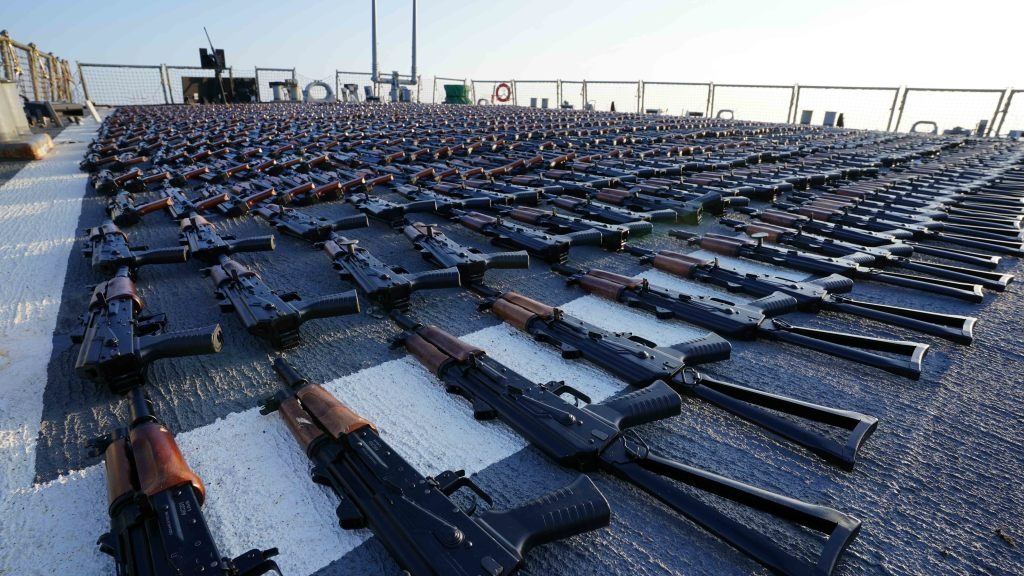India is rapidly solidifying its position as a global leader in weapon manufacturing, fueled by its robust industrial base and strategic focus on self-reliance. With a vast defense ecosystem, the country has achieved significant milestones in producing state-of-the-art weapons for its armed forces and international clients. This article provides an in-depth look into India’s weapon manufacturing industry, prominent players, and their role in transforming the defense landscape.
The Rise of India’s Weapon Manufacturing Industry
The weapon manufacturing sector in India has seen unprecedented growth due to:
- Make in India and Atmanirbhar Bharat initiatives focusing on self-reliance.
- Strategic partnerships with leading global defense firms.
- A thriving ecosystem of public and private enterprises.
- Adoption of cutting-edge technologies in weapon design and production.
India’s defense industry is diverse, ranging from small arms and ammunition to complex missile systems, naval platforms, and aerospace solutions.
Key Weapon Manufacturers in India
1. Public Sector Enterprises
Ordnance Factory Board (OFB)
- One of the oldest weapon manufacturers in India, producing small arms, ammunition, and artillery systems.
- Notable products include the Dhanush artillery gun and various infantry rifles.
Hindustan Aeronautics Limited (HAL)
- Specializes in aircraft, helicopters, and their integrated weapon systems.
- Significant contributions include the Tejas Light Combat Aircraft and the Rudra armed helicopter.
Bharat Dynamics Limited (BDL)
- A leader in missile production, including anti-tank guided missiles, surface-to-air missiles, and torpedoes.
- Known for its role in the development of the Akash and Nag missile systems.
Bharat Electronics Limited (BEL)
- Focuses on advanced defense electronics, including radar systems, electronic warfare systems, and missile components.
Mazagon Dock Shipbuilders Limited (MDL)
- Renowned for building submarines, frigates, and other naval systems for the Indian Navy.
2. Private Sector Leaders
Tata Advanced Systems
- Produces armored vehicles, missile systems, and drones.
- Collaborates with global defense firms to deliver cutting-edge solutions.
Larsen & Toubro (L&T) Defence
- A key player in artillery systems, missile launchers, and naval platforms.
- Known for its contribution to the K9 Vajra-T self-propelled howitzer.
Mahindra Defence Systems
- Specializes in armored tactical vehicles and naval systems.
- Supplies vehicles for the Indian Army and other security forces.
Kalyani Group (Bharat Forge)
- A leader in the production of artillery systems, ammunition, and small arms.
- Notable for its role in the development of the Advanced Towed Artillery Gun System (ATAGS).
Adani Defence and Aerospace
- Focuses on drones, avionics, and small arms production.
- Works on collaborations to integrate advanced technologies into weapon systems.
Major Weapon Systems Produced in India
1. Small Arms
- Indigenous rifles like the INSAS and AK-203 (in collaboration with Russia).
- Pistols, carbines, and light machine guns for armed forces and law enforcement.
2. Artillery and Armored Vehicles
- Dhanush and ATAGS artillery systems.
- Main battle tanks like the Arjun MK-I and MK-II.
3. Missile Systems
- The BrahMos supersonic cruise missile, a joint venture with Russia.
- Surface-to-surface missiles like Agni and Prithvi.
- Surface-to-air systems such as Akash and the Barak-8.
4. Naval Systems
- Indigenous submarines like the Scorpene-class (Kalvari) and advanced frigates.
- Torpedoes and underwater combat systems.
5. Aerospace and UAVs
- Combat aircraft like the Tejas and Sukhoi-30 MKI (under license).
- Drones and UAVs like DRDO’s Rustom and Nishant for surveillance and combat operations.
Technological Advancements in Indian Weapon Manufacturing
1. Artificial Intelligence (AI) and Robotics
- Integration of AI in surveillance systems, target tracking, and autonomous drones.
2. Additive Manufacturing
- Use of 3D printing for rapid prototyping and production of complex components.
3. Stealth Technology
- Development of radar-evading features in aircraft and naval systems.
4. Indigenous R&D
- Organizations like DRDO (Defence Research and Development Organisation) leading innovation in hypersonic weapons and space-based defense systems.
5. Cybersecurity Integration
- Advanced encryption and secure communication protocols for military operations.
Government Initiatives Boosting Weapon Manufacturing
1. Make in India
- Encourages domestic production and reduces dependence on imports.
- Promotes private sector participation through favorable policies.
2. Defence Acquisition Procedure (DAP)
- Prioritizes procurement from Indian manufacturers.
- Simplifies procedures for startups and SMEs in defense innovation.
3. Strategic Partnerships
- Facilitates collaborations between Indian firms and global defense leaders.
4. Defence Corridors
- Development of Uttar Pradesh and Tamil Nadu defense corridors to enhance manufacturing capabilities.
Exports of Indian Weaponry
India is steadily growing its arms exports, providing advanced systems like:
- BrahMos missiles to Southeast Asian and Middle Eastern countries.
- Pinaka multi-barrel rocket launchers.
- Armored vehicles and surveillance equipment to African and Latin American nations.
The country’s weapons have gained recognition for their reliability and cost-effectiveness, bolstering India’s reputation as a trusted arms supplier.
Challenges in Weapon Manufacturing
1. Dependency on Imports
- High reliance on foreign components for critical technologies.
2. Regulatory Bottlenecks
- Complex approval processes can delay project execution.
3. Infrastructure Gaps
- Need for advanced testing facilities and manufacturing setups.
Future of Weapon Manufacturing in India
India’s defense sector is poised for unprecedented growth, with increasing investments, advanced R&D, and international collaborations. The focus on indigenous production, coupled with the export potential, ensures that India will continue to be a global force in weapon manufacturing.
Also Read
- ► Mobile Coffee Bar: A Unique Experience for Any Event
- ► Best Indian Food Chicago: A Culinary Journey through Flavorful Delights
- ► Home Temples: Elevating Spiritual Spaces in Modern Homes
- ► Yeezy Gap hoodie Sizing Guide How to Find Your Perfect Fit
- ► Veneer Doors Manufacturer: Crafting Elegance and Durability
- ► Exploring the Iconic Hellstar Hoodie || Black Hellstar Hoodie
- ► Classic Eric Emanuel Shorts for Any Occasion
- ► Dining Room Furniture: Creating Elegant and Functional Spaces
- ► Integrating Ayurveda with Conventional Cancer Treatment for Immunity Boost
- ► Understanding 503 Service Unavailable: What It Means
- ► Bedroom Furniture: Transforming Spaces into Relaxing Retreats
- ► Manali Couple Tour: Essential tips for a perfect vacation
- ► Understanding DSPM: What Does DSPM Mean?
- ► Invest in a Timeless Stussy Hoodie
- ► Exploring the Importance of B88221141: A Comprehensive Guide





